초록
Purpose:
To report 2 cases of recurrent Enterococcus faecalis (E. faecalis) endophthalmitis after uneventful phacoemulsification and posterior chamber intraocular lens (IOL) implantation.
Case summary:
Case 1: A healthy, 75-year-old female presented with a sudden visual loss and ocular pain 2 days after phacoemulsification and IOL implantation. After successful treatment with intravitreal antibiotics injection, the infection was apparently cleared. At 1 month after the initial presentation, recurrent endophthalmitis occurred and was resolved with vitrectomy, silicon oil tamponade, and intravitreal antibiotics injection. Two months after vitrectomy, the silicone oil was removed and the patient’s final visual acuity improved to 20/400 5 months later. Case 2: A healthy, 74-year-old female presented with a sudden visual loss 2 days after phacoemulsification and IOL implantation. After successful treatment with intravitreal antibiotics injection, the infection was apparently cleared. One month later, recurrent endophthalmitis occurred and was resolved with vitrectomy, posterior capsulotomy, and intravitreal antibiotics injection. Forty days later, the patient had a similar relapse. The infection resolved with IOL ex-plantation, silicon oil tamponade, and repeated intravitreal antibiotics injections. E. faecalis was identified at the first and recurrent episode. Vancomycin and ceftazidime were used for each intravitreal administration. Silicone oil removal and IOL scleral fixation were performed and the patient’s final visual acuity was 20/40 5 months later.
Go to : 
References
2. Aaberg TM Jr, Flynn HW Jr, Schiffman J, Newton J. Nosocomial acute-onset postoperative endophthalmitis survey. A 10-year review of incidence and outcomes. Ophthalmology. 1998; 105:1004–10.
3. Kattan HM, Flynn HW Jr, Pflugfelder SC, et al. Nosocomial endophthalmitis survey. Current incidence of infection after intraocular surgery. Ophthalmology. 1991; 98:227–38.
4. Results of the Endophthalmitis Vitrectomy Study. A randomized trial of immediate vitrectomy and of intravenous antibiotics for the treatment of postoperative bacterial endophthalmitis. Endophthalmitis Vitrectomy Study Group. Arch Ophthalmol. 1995; 113:1479–96.
5. Microbiologic factors and visual outcome in the endophthalmitis vitrectomy study. Am J Ophthalmol. 1996; 122:830–46.
6. Benz MS, Scott IU, Flynn HW Jr, et al. Endophthalmitis isolates and antibiotic sensitivities: a 6-year review of culture-proven cases. Am J Ophthalmol. 2004; 137:38–42.

7. Han DP, Wisniewski SR, Wilson LA, et al. Spectrum and suscepti-bilities of microbiologic isolates in the Endophthalmitis Vitrectomy Study. Am J Ophthalmol. 1996; 122:1–17.

8. Choi S, Hahn TW, Osterhout G, O'Brien TP. Comparative intravitreal antibiotic therapy for experimental Enterococcus faecalis endophthalmitis. Arch Ophthalmol. 1996; 114:61–5.

9. Chen KJ, Lai CC, Sun MH, et al. Postcataract endophthalmitis caused by Enterococcus faecalis. Ocul Immunol Inflamm. 2009; 17:364–9.
10. Kim HW, Kim SY, Chung IY, et al. Emergence of Enterococcus species in the infectious microorganisms cultured from patients with endophthalmitis in South Korea. Infection. 2014; 42:113–8.

11. Friling E, Lundström M, Stenevi U, Montan P. Six-year incidence of endophthalmitis after cataract surgery: Swedish national study. J Cataract Refract Surg. 2013; 39:15–21.

12. Scott IU, Loo RH, Flynn HW Jr, Miller D. Endophthalmitis caused by enterococcus faecalis: antibiotic selection and treatment outcomes. Ophthalmology. 2003; 110:1573–7.
13. Stern GA, Engel HM, Driebe WT Jr. Recurrent postoperative endophthalmitis. Cornea. 1990; 9:102–7.

14. Stern JH, Calvano C, Simon JW. Recurrent endogenous candidal endophthalmitis in a premature infant. J AAPOS. 2001; 5:50–1.

15. Aldave AJ, Stein JD, Deramo VA, et al. Treatment strategies for postoperative Propionibacterium acnes endophthalmitis. Ophthalmology. 1999; 106:2395–401.

16. Ayyala RS, Stevens SX, Grizzard WS, Fouraker BD. Recurrent endophthalmitis after cataract surgery with a scleral-tunnel incision. Cornea. 1998; 17:233–5.

17. Yu EN, Foster CS. Chronic postoperative endophthalmitis due to pseudomonas oryzihabitans. Am J Ophthalmol. 2002; 134:613–4.

18. Ritterband D, Shah M, Cohen K, et al. Burkholderia gladioli keratitis associated with consecutive recurrent endophthalmitis. Cornea. 2002; 21:602–3.

19. Chen JC, Roy M. Epidemic Bacillus endophthalmitis after cataract surgery II: chronic and recurrent presentation and outcome. Ophthalmology. 2000; 107:1038–41.
20. Nasrallah FP, Desai SA. Recurrent enterococcal endophthalmitis following cataract surgery: a case report. Ophthalmic Surg Lasers. 1999; 30:481–2.

21. Teoh SC, Lee JJ, Chee CK, Au Eong KG. Recurrent Enterococcus faecalis endophthalmitis after phacoemulsification. J Cataract Refract Surg. 2005; 31:622–6.

22. Miller KV, Eisley KM, Shanks RM, et al. Recurrent enterococcal endophthalmitis seeded by an intraocular lens biofilm. J Cataract Refract Surg. 2011; 37:1355–9.

Go to : 
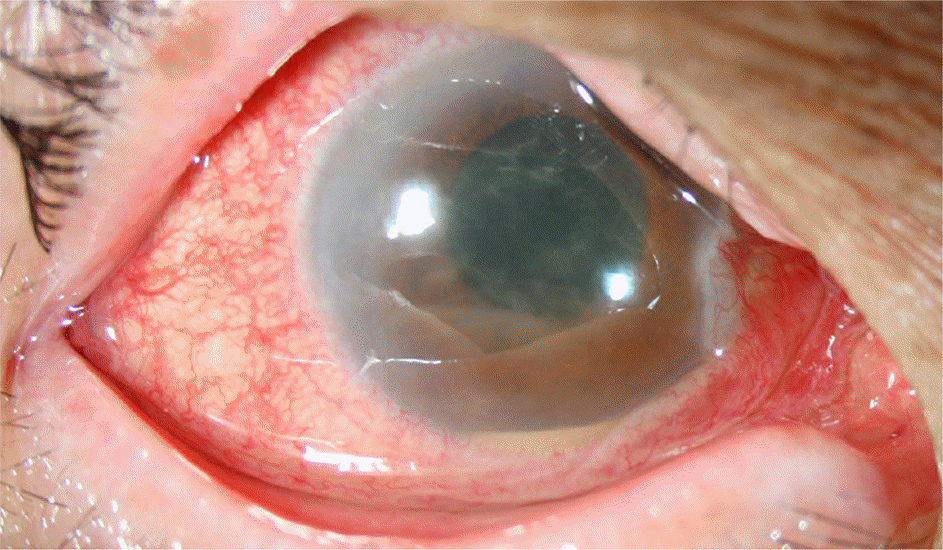 | Figure 1.Recurrent endopthalmitis at 1 month after intravitreal antibiotics injection. Exudative membrane, hypopyon, and ocular injection were found. |
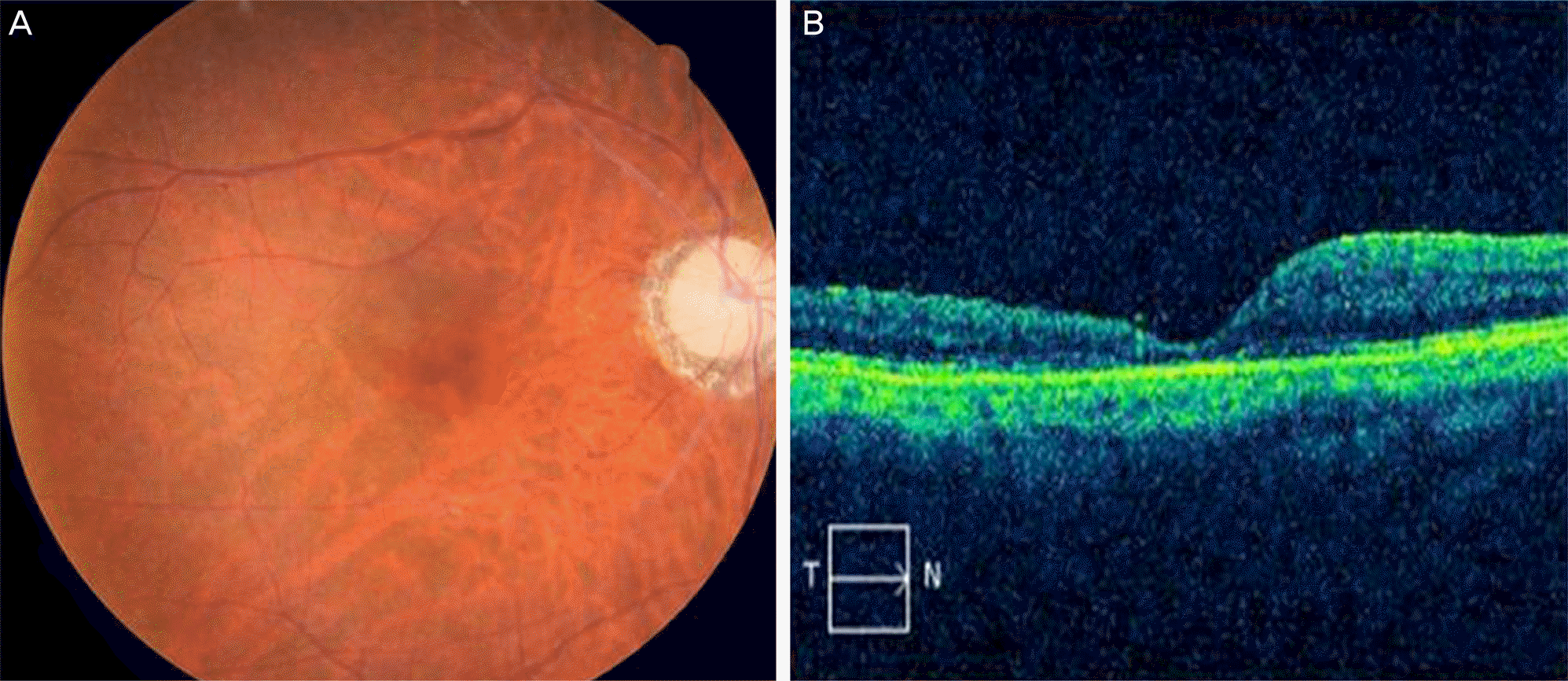 | Figure 2.At five months after recurrent endophthalmitis, there was no inflammation or infection signs on fundus photo (A) and spectral domain optical coherent tomography (SD-OCT) (B). SD-OCT images showed macular thinning. |
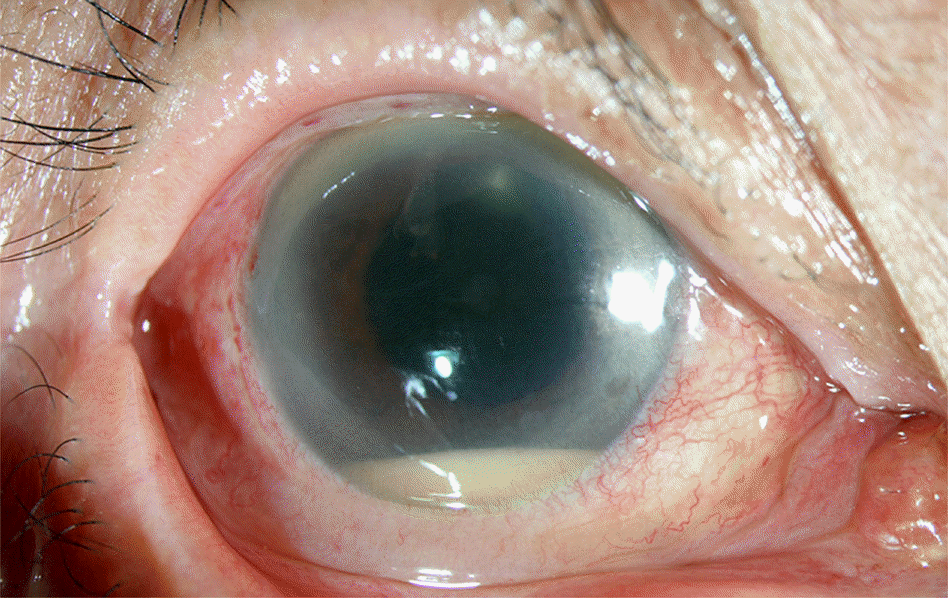 | Figure 3.First episode of endopthalmitis. Two days after cataract surgery, exudative inflammation with hypopyon were noticed. |
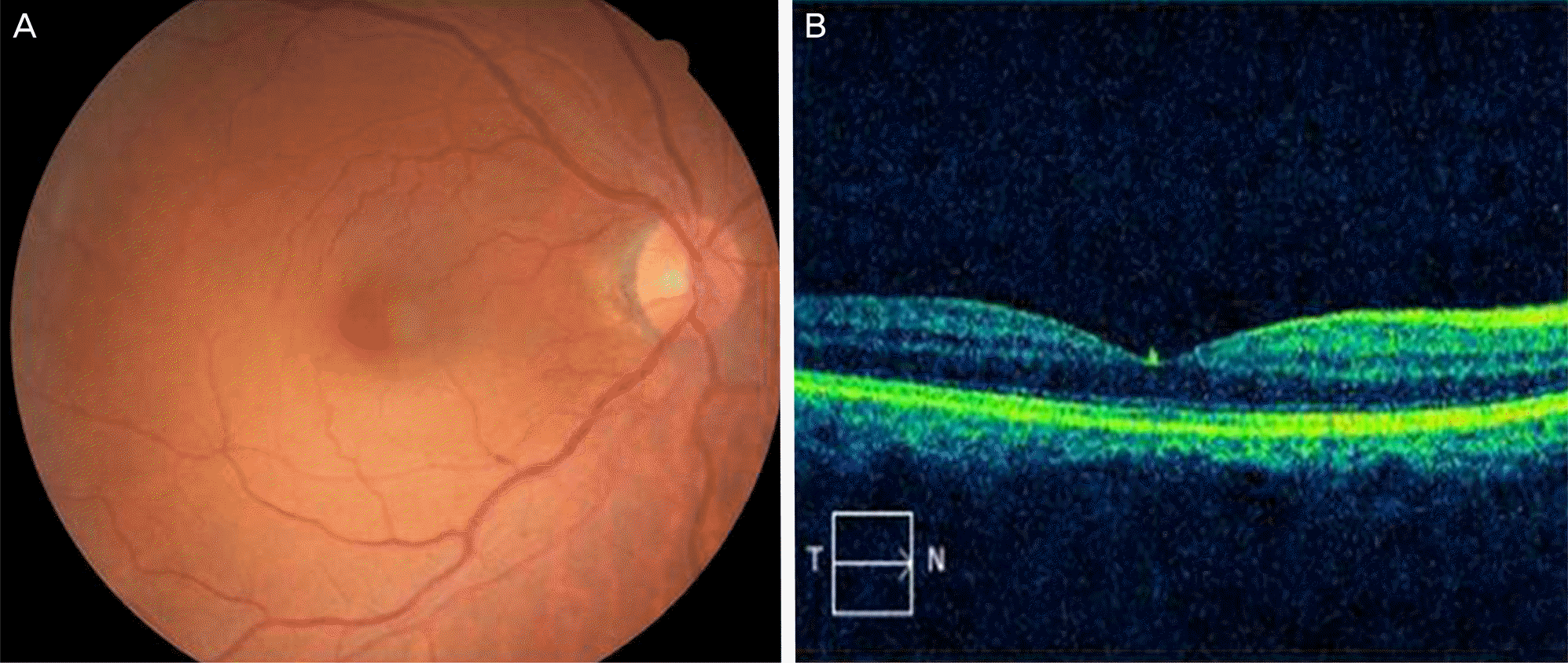 | Figure 4.At 1 month after vitrectomy, posterior capsulotomy, and intravitreal antibiotics injection, there was no inflammation or infection signs on fundus photo (A) and spectral domain optical coherent tomography (B). |




 PDF
PDF ePub
ePub Citation
Citation Print
Print


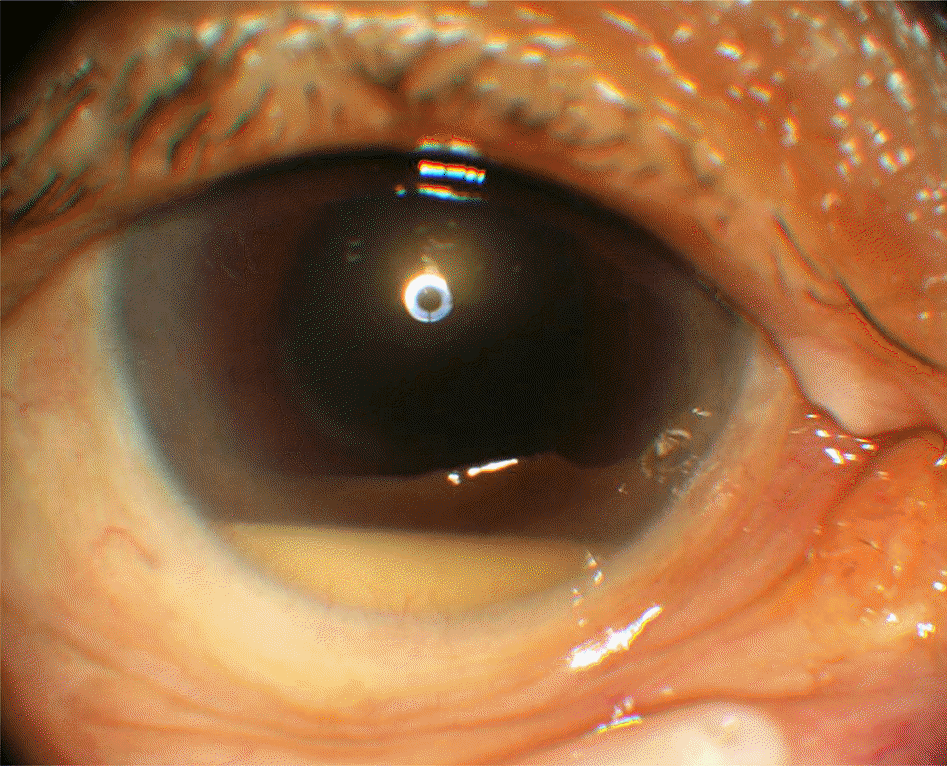
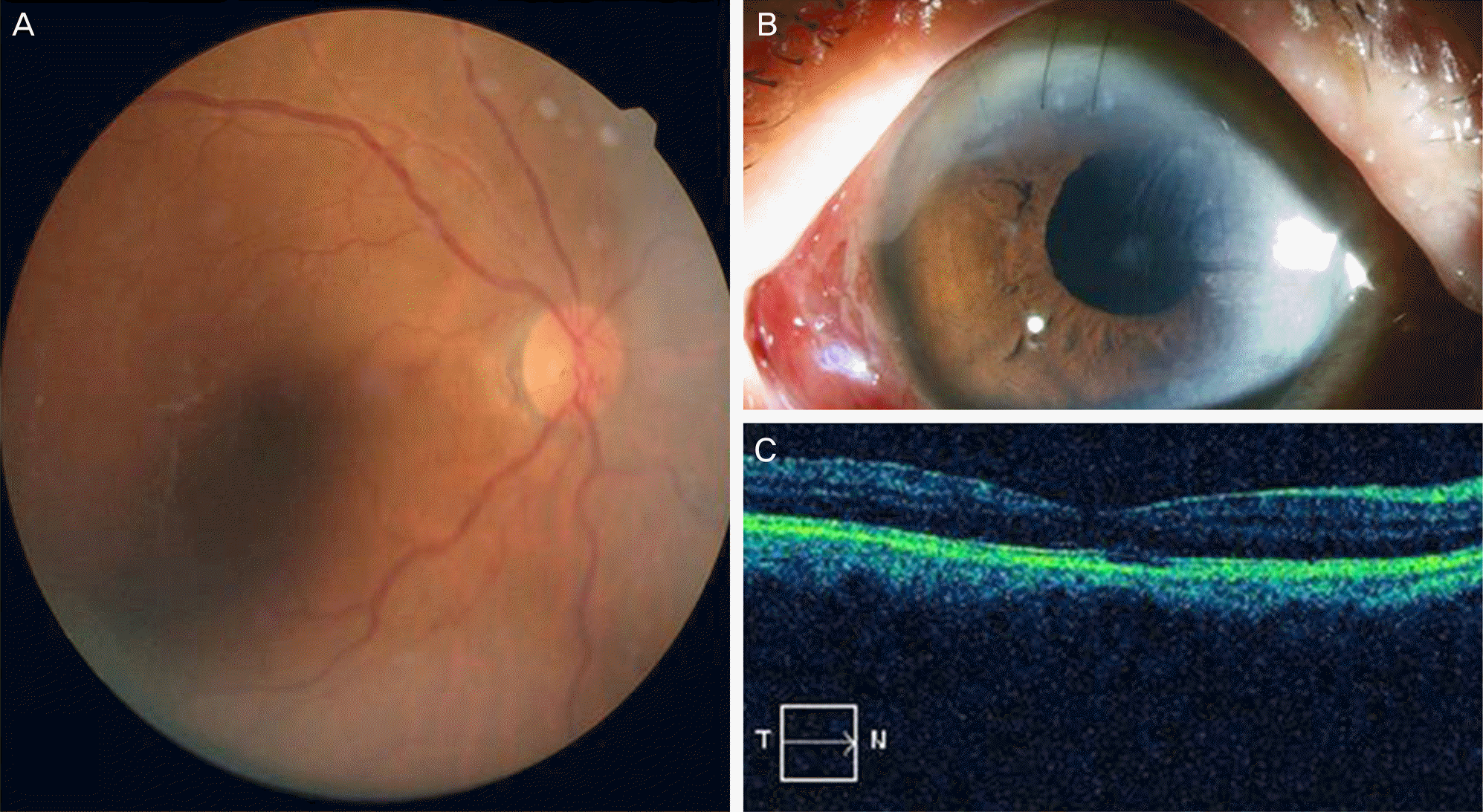
 XML Download
XML Download